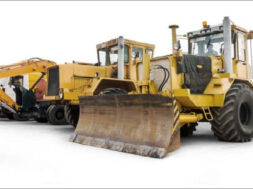Indian construction industry is always at the forefront to adopt new technologies and new materials for the benefit of the industry. Industry gained benefits by utilising industrial by-products like fly ash (FA) / ground granulated blast furnace slag (GGBS) / silica fume (SF) as partial replacement of cement or as additives in concrete production. Recently microfine mineral admixtures like Alccofine 1203 (AF), microfine fly ash (MFFA) Metakaoline (MK) etc have entered into the market besides Silica Fume. The industry wants to know more about their performance in concrete and mortar and how much it is beneficial in all means. This article reviews different microfine materials properties and their advantages in improving performance of concrete
Role of Mineral AdmixturesIS 456: 2000 permits usage of FA, SF, MK, GGBS, and Rice Husk Ash (RHA) as mineral admixture. The advantage of mineral admixtures in concrete is in two ways: To replace cement to a certain percentage, and to impart strength in the form of secondary hydration. How much cement replacement can be done depends on the type and characteristics of pozzolana selected. Because of these advantages mineral admixtures are being used in concrete at construction sites and in ready mixed concrete. Many times combination of two additives is used like SF + FA, SF +MK etc to have maximum replacement of cement and better performance characteristics in concrete. When GGBS is used, replacement can go up to 70 per cent and even more if needed.
To use these materials in concrete, IS specifies required properties in the respective codes. IS 3812, IS 15338 and IS 7668 (under circulation) are meant for FA, SF and MK respectively. There is no IS code for specifications of GGBS and RHS to use in concrete. However, they can be used in concrete as per IS 456:2000 if they are satisfying the desired required properties of concrete. Most of these materials except GGBS are siliceous in nature and fine to microfine (from 300 m2/kg to 700 m2/kg) in nature. No doubt, addition of these materials enhances mechanical properties of concrete. Recent studies indicate although these materials help to enhance strength and reduce permeability to some extent still considerable micro pores are left over and the interfacial zone between aggregate and paste may not be fully intact. Further pozzolanas may affect some properties like workability, water requirement, cohesiveness, flow ability etc. which need to be taken care of. Microfine materials play a significant positive role to improve in these cases particularly particle packing in concrete.
Importance of Microfine MaterialsParticle packing in concrete both on macro and micro size plays a vital role to improve performance characteristics like workability, cohesiveness, low permeability, resistance to aggressive chemicals and moisture, compressive/flexural strength, shrinkage etc. Several types of coarse and fine aggregates – natural, manufactured, recycled are available. However grading and shape of aggregates is non standard which, when used in concrete, even in best possible combination results in the particles not fully packed and scope for voids is therefore inevitable. Packing efficiency of coarse and fine aggregates depend on size, shape and standard gradation and other physical properties of aggregates. Similarly at micro level, the cement is also frequently blended with different varieties of mineral admixtures having particles ranging from normal fineness (Blaine) to microfine and even up to nano scale. This needs investigation to check the packing efficiency of particles both at macro and micro levels. Improvement in particle packing at macro level is achieved by following standard grading aggregates and at micro level by judiciously adding additive/s of different particle size distribution (PSD) along with cement and other ingredients particularly below 45 microns. Hence it is preferred to use both fine and microfine of these materials. Which fine/ microfine material/s and at what proportions depends upon packing efficiency and performance specifications of concrete. Particles between 0.5 and 10 microns are considered as microfine in this study.
Performance of Microfine MaterialsThe incorporation of microfine along with fine mineral admixture/s in concrete is a new concept to further improve the properties of concrete both in fresh and hardened states. Without combination of fine and microfine additives perfect particle packing may not be achieved below 45 microns. Several experts carried out detailed studies on microfine materials influence on the rheological and mechanical properties of concrete. It is reported that the type micro fine admixture and its physical, chemical and mineralogical properties play a significant role to bring changes in the properties of concrete. The physical, chemical and morphological characteristics of four available microfine materials namely AF, SF, MFFS and MK are presented in the Table 1 and Fig1.
In general SF is microfine material (average particle size 0.15 micron) that needs to satisfy the standards of ASTM C 1240. However, in recent past SF available in India is normally in condensed form and particle size varies to a greater extent. The basic requirement of effectively using SF is that it should be fully broken down from its condensed to the primary microfine condition with full dispersion ensured throughout the concrete mixture; during the mixing operation. In case this does not happen, then the particle size distribution would be inappropriate in the concrete and consequently pozzolanic reaction is effected and expected benefits may not be achieved.
MFFA may be developed either by grinding and classifying fly ash. The classified fly ash particles are mostly spherical in nature and this helps to improve flowability property of concrete. Over grinding of fly ash disturbs spherical nature of particles and thus affecting rheological properties.
AF is cementitious in nature and has a particle range from 5 micron to 0.1 micron. Although AF particles are relatively sub-herdral – sub-angular, their smooth surface texture helps to improve flowability properties. Influence of Microfines on Durability & High Performance of Concrete ACI defines durability as: “The ability of a material to resist weathering action, chemical attack, abrasion and other conditions of service” and high performance concrete as “concrete meeting special combinations of performance and uniformity requirements that cannot always be achieved routinely using conventional constituents and normal mixing, placing and curing practices.” The key factors that affects durability of concrete structures are- permeability, non-homogeneities in the hydrated cement paste, bond strength at interfacial zone between binder paste and aggregate. The forthcoming discussions describe how combination of fine and microfine materials in concrete improves properties both fresh and hardened states and thus enhance durability and performance of concrete.
Rheological propertiesConcrete workability can be characterised in terms of its rheological property in fresh state which in turn depends upon fine/ microfine cement and cementitious materials used besides placing condition, environmental and other factors. The morphological characteristics and chemical and physical properties influence workability, workability retention, cohesiveness, viscosity, flowability properties etc. of fresh concrete. The spherical nature and microfineness of particles have ‘rolling effect’ and improves workability and flowability. AF has distinct property of ‘dispersing effect’ which helps to have long period of workability retention. Microfines also affect viscosity, pumpability properties of concrete. Concrete with a high slump before pumping may lose slump and at disposal end has a low slump. This becomes critical when concrete is pumped at greater heights 400-600 metres. One of the solutions is to use considerable quantity of fine and microfine materials along with cement so as to increase paste content which acts as effective lubricate and tends for better pumping.
Mechanical PropertiesGenerally Pozzolanas are incorporated as an additive or substitute to the ordinary Portland cement in concrete at site due to their capacity for reacting with lime which originates during the hydration of cement. The result is secondary formation of cementitious compounds. This pozzolanic reaction modifies properties like packing and pore structure of the concrete. When fine pozzolana/cementitious particles are dispersed in the paste, they generate a large number of nucleation sites for the precipitation of the hydration products. This mechanism makes the paste more homogeneous and dense and larger pores are reduced to small pores. These small pores can never be filled in unless microfine materials are used. This inevitably improves two important characteristics in hardened concrete namely compressive/flexural strength and impermeability. In addition, the physical effect of the fine and micro fine grains allows denser packing within the cement and reduces the wall effect in the transition zone between the paste and aggregate. This weaker zone is strengthened due to the higher bonds developed between these fines and calcium hydroxide phases, improving the concrete microstructure and properties. Thus, packing effect depends not only on the pozzolanic reaction, but also on the physical nature (shape) and filler effect of the smaller particles (both finer and microfine) in the mixture.
Reduction in permeability controls ingression of aggressive agents such as water, chloride / and sulphate, carbonation, alkali silica reaction etc and thus improves durability and performance of concrete.
Water Film ThicknessApart from the packing density, it has been noticed that the water film thickness around the particles also has great impact on the rheological properties of concrete/cement mortar. Research studies indicated that a smaller water film thickness would lead to a lower flowability whereas a larger water film thickness would lead to a higher flowability. The thickness of water film depends on water content, specific surface area, percentage of microfine and their shape etc.
Particle InteractionAs a water-solid mixture flows (as in the case of flowable concrete), the solid particles contained therein collide and interact with each other and reduce the flowability and passing ability of the mixture especially when passing through narrow gaps ( between reinforcements). Studies indicated that particles interaction is dependent on the particle size to gap width ratio. When the bulk volume microfine materials is more than enough to fill up the voids between the coarser size particles, then, the inter particle distance between the coarse particles would be increased and the particle interaction between the coarse particles would be reduced and the passing ability of the mixture would be increased.
ConclusionsThe use of fine and microfine mineral admixture/s in concrete is becoming very important in order to meet various performance requirements in concrete both in the fresh and hardened states. In fresh concrete, they help to achieve a good degree of cohesiveness and segregation resistance, pumpability, slump, workability retention etc. In the hardened state, they improve a high degree of packing leading to better strength and low permeability and ingression of aggressive agents and hence, improve durability and performance of concrete. A combination of fine and microfine is a must to have improved benefits.AF: Alccofine 1203, SF: Silica Fume , MFFA: Microfine fly ash, MK: Metakaoline
ReferencesAmerican concrete Institute’s concrete manual, 2011Cyrus Dordi, Strengthening concrete performance, Construction world, 2011Khayat K H, A.Yahia and M. Sayed, Effect of Supplementary Cementitious Materials on rheological properties, Bleeding and Strength of structural grout, Material Journal, Vol.105, No.6, .Kwan A K H,P L Ng and W W S Fung,Research directions for high-performance concrete, annual conference,2010Lange F, H Mortel and V Rudert, Dense packing of cement pastes and resulting consequences on mortar properties, cement and concrete research, V.27, No10,1977.Malhotra, M., “Strength and Durability of Concrete incorporating a palletized Blast Furnance Slag” in “Flyash, Silica Fume and other mineral by-products in concrete”. ACI SP 79, Vol.2, ACI, 1983.Malhotra, V.M and P.K. Mehta, “Pozzolanic and Cementitious Materials”, Overseas Publishers, 1996.Mehta P K and Richard W Burrows, Building durable structures in 21st century, The Indian concrete journal, v. 34, No.7, 2001.Nehdi.M, S. Mindess and P C Aitein, Rheology of high performance concrete: effect of microfine particles, Cement and concrete research, v.28, No.5,1998.Swamy, R.N. Role of Slag in the development of Durable and Sustainable High Strength Concrete proceedings of International Symposium on concrete technology for sustainable development in the 21st Century, Hyderabad, Feb. 1999.Wang Ling,Tian Pei and Yao yan, Application of ground granulated blast furnace slag in high performance concrete in China, International workshop on sustainable development and concrete technology,Beijing,China,2004,pp .Yanzhou,Shuguang Hu and Qingjun Ding, Dense packing properties of mineral admixtures incementitious material, particuology,V.7, no.5, 2000.
Cookie Consent
We use cookies to personalize your experience. By continuing to visit this website you agree to our Terms & Conditions, Privacy Policy and Cookie Policy.









